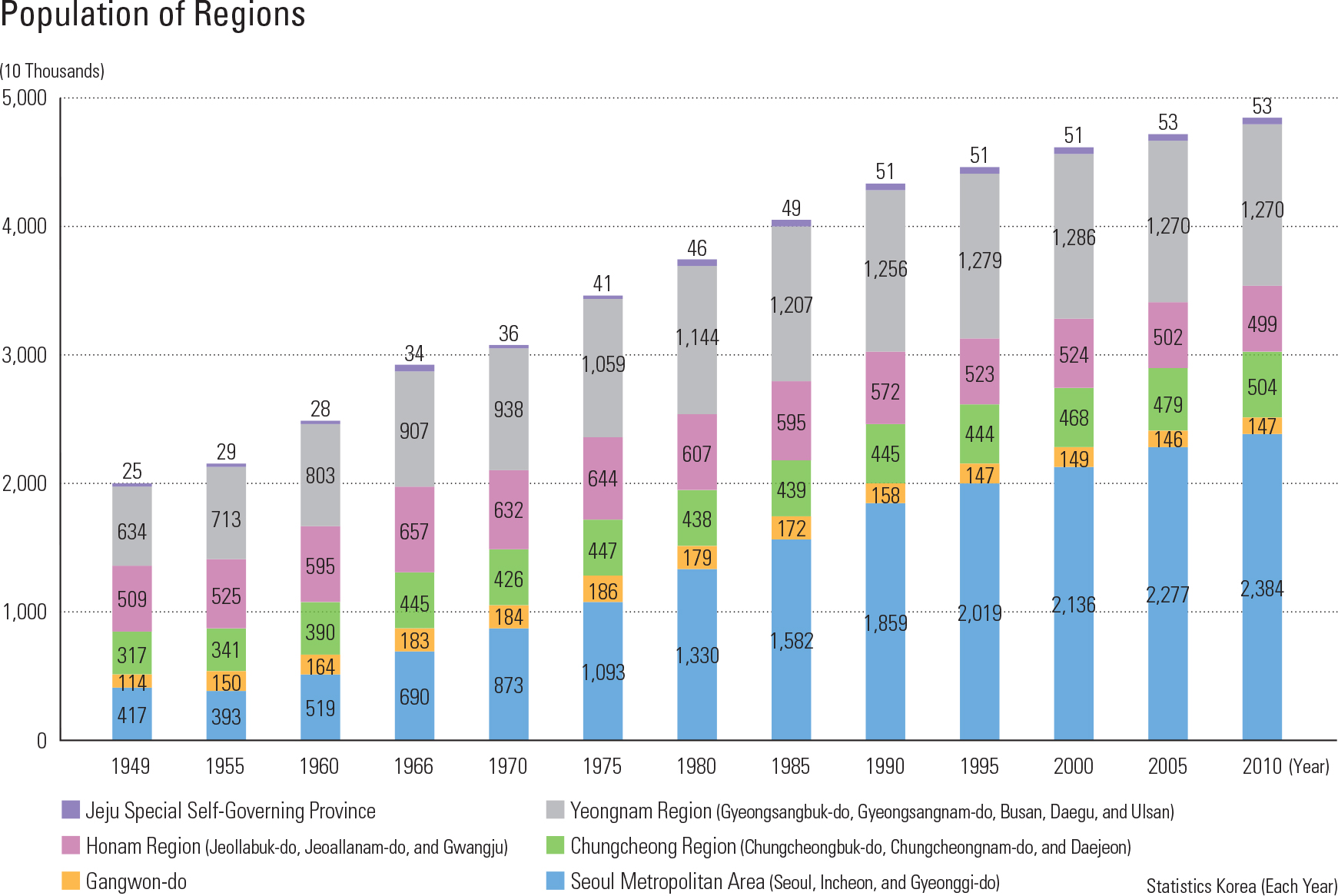English III
Population is a fundamental unit of measure in the formation of a nation, and represents a nation’s political, social, economic, and cultural characteristics concisely. The Population Census indicates that Korea’s population increased rap- idly from approximately 20.2 million in 1949 to 48.6 million in 2010. The population density in 2010 reached 486 persons/km², one of the highest in the world. When examined by administra- tive districts, about 73% of the total population (14.8 million) lived in -myeon districts in 1949. In 2010, the ratio dropped to 9% (4.6 million). Simultaneously, the population living in -dong districts increased from 18% (3.5 million) in 1949 to 82% (39.8 million) in 2010, re ecting a rapid urbanization process over the past decades. Geographically, population is concentrated in the Greater Seoul Metropolitan area. In 1949, the Greater Seoul Metropolitan area had 21% (4.2 million) of the total population. By 2010, this increased to 49% (23.8 million). The population percentages in all other regions declined during this period. Particularly, the Honam region, with a shrinking population, experienced the highest drop. Between 1949 and 2010, the population of Korea grew by about 28.4 million. The Greater Seoul Metropolitan area gained approximately 19.7 million, followed by 6.4 million in the Yeo- ngnam area. These two areas account for about 92% of the total population increase during this period. This indicates that the Greater Seoul Met- ropolitan area and the Yeongnam area led Korea’s economic growth, and that resources such as cap- ital, technology, and labor have been concentrated in these two regions during the period of Korea’s economic development.
page_2 |

